The Ultimate Guide to Pool Algae
Pool algae is an obnoxious and often debilitating problem that keeps people out of the water and leaving you with a pool that is underutilized. Algae blooms are caused when algae spores enter the pool that travel there either by wind, rained, or contaminated suits and equipment. Given good conditions (heat, sunlight, high pH), you can have a significant algae problem overnight.
Conditions Algae Likes
Algae thrives in environments that lack proper circulation, filtration, and sanitation. The little aquatic creatures multiply rapidly in the warmth of the sun. Algae uses photosynthesis to grow, taking in carbon dioxide and expending oxygen as a byproduct.
Algae itself is not harmful to swimmers, but pools that host algae may also harbor pathogens like E-coli bacteria. It clogs up sanitation pathways, the pores in the filter, and making your system less efficient. Algae creates consumes chlorine that should be working on the contaminants. It’s a time, money, and energy suck if it’s allowed to thrive in a pool environment.
Different Kinds of Algae
There are 21,000 known varieties of algae, but when in reference to a pool, they are referred to by their color.
Green algae is the most common in swimming pools and will appear after a hazy condition caused from poor filtration/sanitation gets out hand. Green algae will float in the water as well as cling to the walls. It can get quite dark and will reduce clarity rather than just tint all the water a translucent green like with copper problems.
Yellow algae clings to the walls, typically in the shade. It is sheet forming and can be difficult to get rid as recurrence is very common. It is chlorine resistant and can be difficult to eradicate completely.
Black algae is also very difficult to get rid of as its roots are strong and often has a security system that keeps the roots from being destroyed. It typically manifests itself as dark black or blue/green spots no bigger than the tip of a pinky. The roots get into porous surfaces like plaster or tile grout and unless they’re destroyed, a new head will grow back in the same place. The heads have a protective layer that keeps the cell destroying chemicals from entering the organism. It can bloom in the presence of chlorine and even with proper pool filtration. Oftentimes, black algae travels in the swimwear of someone who has recently been to the ocean. Encourage bathers to properly wash their swimwear and shower before entering the pool.
Pink algae is not really algae at all but a kind of bacteria that shows up in corners and creases of your pool. It is slow to spread and rarely blooms over an entire pool.
Preventing Algae Growth
Prevention is important. Properly taking care of your pool is the best weapon in the fight to keep algae out of your pool. There are three keys to preventing algae: proper chemical balance, good cleaning habits, and using algaecide.
Pool chemistry is vital in the fight to keep algae from blooming. High pH and low chlorine (or whatever sanitizer you use) is great for algae growth—not so good for those taking care of the pool. Keeping any kind of organic material (leaves, dirt, etc.) is another good way for algae to breed. Another aspect of good pool chemistry is shocking it weekly. A weekly pool shock treatment will kill small amounts of algae that may have entered your pool that may get past your regular sanitizer. The elevated chlorine levels make the water unlivable for anything organic and algae quickly dies.
Always try to pay close attention to your chlorine levels, particularly if you have a problem with algae. Algae and bacteria are almost immediately destroyed by a free chlorine level of 1 ppm or higher. If you regularly let your chlorine level dip below that, you are inviting chlorine to live in your pool water.
Brushing your pool walls regularly is a great way to dislodge algae spores keep them from spreading. Pool walls, steps, and floors are the most common places for pool algae to grow and regularly brushing and scrubbing these surfaces will help fight your algae problem. If you have a gunite or plaster pool, use a brush with stainless steel bristles to get the algae off of your walls. If you have a vinyl, fiberglass, or similarly delicate pool structure, use a nylon brush instead. Try and make it a weekly habit.
All About Algaecides
Algaecides are a great, recommended way to back up a normal sanitation system. Here are a few of the algaecide terms that will help you distinguish between types and fix your pool based on your own diagnosis.
Potassium Tetraborate:
When added properly to a pool, it prevents algae from converting carbon dioxide in order to grow. Products like ProTeam Magic Shock fit under this category.
Chitin:
This product isn’t an algaecide exactly as it’s not meant to kill algaecide. It’s technically an algaestatic that prevents algae growth. It has the ability to remove a variety of suspended materials and impurities from the water. Chitin allows the sanitizer to more effectively kill contaminants. It improves the effectiveness of the filtration equipment.
Quaternary Ammonium Compounds:
This is a kind of algaecide referred to colloquially as “quats.” This has 10% active ingredient and you’ll usually find “10” somewhere on the bottle. Quats usually cause a small amount of surface foaming. It is considered a good preventative measure, NOT as something that is meant to get rid of an existing algae problem.
Polymers:
Polymers are chemicals that can behave either as an algaestat and an algaecide. They are sold in strengths between 30-60%, don’t foam, and work well as an algae treatment. You can buy products that are a blend of polymers and quats called "polyquat."
Copper-based:
If you purchase a sanitizerthat is copper based, you are getting a product that is good at killing off algae and preventing its growth. It comes in strengths between 3-10% and works on all kinds of algae. Copper based algaecides can stain plaster a light blue/green color if it precipitates out of the solution, but most are formulated to avoid this kind of side effect.
Silver-based:
Silver is a proven bacteriostat that keeps bacteria from reproducing. It doesn’t foam and works great on pink algae. If used in abnormally high doses, it can react with sunlight to stain plaster black. A sequestering agent is recommended when used with copper or silver algaecides.
Chlorine enhancers:
These aren’t algaecides, but works to boost hypochlorites when added separately. It is effective on yellow algae and the product often has “yellow” or "mustard" in the name like ProTeam Mustard and Black.
Get Rid of It
- Balance your water, making sure the pH is right in the goal area of 7.2-7.6. This makes sure that your chlorine or sanitizer added will work efficiently. You should regularly test your water at least 2-3 times a week and make adjustments so that proper levels of sanitizer are maintained so it can kill off algae growth.
- High pH levels will impair the efficiency of the sanitizer. While the pool system runs, add chlorine-based swimming pool
shock at the rate of 1 lb. per 7,500 gallons (or follow the pool shock manufacturer’s suggestions for killing algae). The filter should run all day and night, adjusting the valves for optimum circulation.
- Turn on your automatic cleaners to help stir things up. Backwash as necessary.
- You’ll also want to pay attention to the phosphate levels in your pool water. High phosphate levels will result in your pool using more chlorine than usual. It is also a main food source for algae. Get yourself a phosphate test kit and if your phosphates are high, get a phosphate remover that you can use in your pool. Let the filter or automatic cleaner remove the phosphate remover after a day or so. Clean your filter after this process as the residue clogs up the filter. Keep repeating until the tests show no phosphates in the water. This takes less time if you use a commercial strength product directly in the pool. Once the phosphate levels are down to zero, shock the pool.
- For suspended green algae (or algae that is floating on the water), shock the pool. Add your hypochlorite until the pool turns a bluish/gray color. Brush the walls and floors towards the drain. Backwash the filter when the pressure gauge indicates. Don’t forget this step! The filter needs to be backwashed to make sure no dead algae is trapped in the filter. If the filter is not thoroughly cleaned, the algae may return to the water.
- It may also be a good idea to add a flocculent that binds the particles so they fall to the bottom and can be vacuumed away. If you cannot see the bottom of the pool and it is filled with leaves and debris, it’s probably good idea to drain and acid wash to start over.
- After the chlorine level has come down below 5 ppm, add an algaecide and brush the pool again. Once the water settles, vacuum the debris. Check and rebalance if necessary.
- If algae is clinging to the walls, follow the same course of action. Shock, brush, add an algaecide, brush again, and vacuum to waste. Vacuuming to waste means you’re pumping the debris you vacuum out of the pool and sending the water to the waste line and not through the pool filtration system. Run the pool circulation and filters.
- To get rid of black algae, consider using pumice stones to knock off the heads of the growth. Vacuum them up and make sure they get backwashed out of the filter as soon as possible. Sprinkling trichlor over black algae is also effective. This can be difficult with black algae that’s on the walls of your plaster. Follow with a dose of copper algaecide or high strength polymers.
- Don’t be too discouraged if you need to drain the pool and acid wash. If algae has been a longstanding problem, the acid wash is often needed to get out the algae cells that are living in the plaster. You might also want to change the sand in your sand filter or change your cartridge filter. Sand should be changed every 5-7 years and you should get a new filter cartridge every 1-2 years. A well-functioning filter will prevent algae. A good filter will prevent algae.
- If you have an older pool system, you may need to look at getting a new pump and/or filter. Preventing algae means you need good filtration, sanitation, and circulation. It’s going to be better in the long run to replace faulty or inadequate equipment than to spend time, energy, and money fighting algae blooms. Your pool filter system should fun for at least 8 hours a day and longer is better. This makes your water clearer the more efficient your pool filter is. Clear water means you’re less likely to develop pool algae.
- In the winter, invest in a mesh pool cover that will prevent debris from entering your pool, yet allow water to pass through and keep your pool clean.

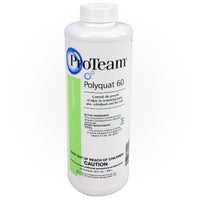
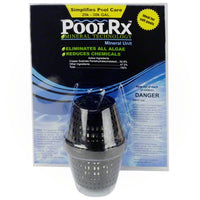
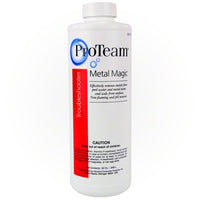
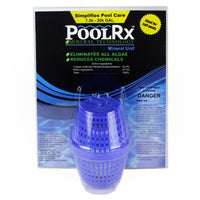
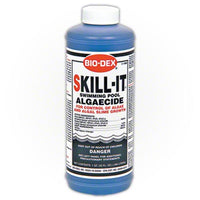
Leave a Comment